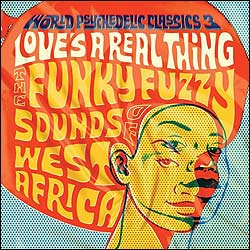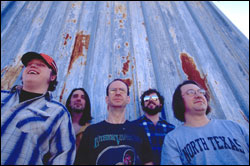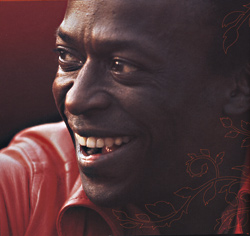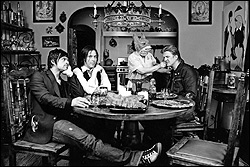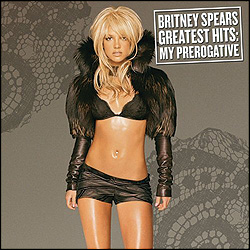There’s nothing primal about the varied beats that stomp, swerve, slide, and skitter across Africa, no matter what your bloodstream or received wisdom tells you. Those polyrhythms don’t channel eternal spirits of the Earth; they comprise the language of cultural clash and provisional consensus. And as three recent releases of archival African music show, they’re juiced by the human current that flows across a continent displaced by colonization, modernization, and just plain restlessness. Oh, and—can’t forget this part—they’re a total blast.
Rarely have Afropop guitarists sounded so casually wayward, so spacey and exploratory, as on Love’s a Real Thing: The Funky, Fuzzy Sounds of West Africa, the third volume in Luaka Bop’s World Psychedelic Classics series. While neither the circular repetitions of most traditional West African music nor the elliptical flow of Congolese rumba, or soukous, is in any particular hurry to get anywhere, both styles still roam with self-evident purpose. And yet, though these excitable young people are instantly recognizable as hippies, their African birthright allows them access to the ego-free model of improvisation their Western psych-rock models sensibly sought, as well as the sense of structure those acid warriors foolishly fled. Only one of these dozen cuts breaks the 10-minute mark, while several—such as the title track, on which the Super Eagles chant a bit of flower-empowered, Nuggets-worthy nonsense—are as concise and discrete as any smart pop fan demands.
As African appropriations of Western style go, Love’s a Real Thing recalls not so much soukous’ own peculiar usage of Cuban music as the township jazz of ’50s South Africa. I’m referring not to the sour horns of “Porry” (which remind you why hippies mostly stayed away from brass, and also why maybe they shouldn’t have) but to the amateurish good will with which these musicians mimic foreign models of independence. And yet, township jazz melded with local styles to develop into a tradition. While maybe you can hear scraps of proto-Fela funk here, or harbingers of the rough-and-tumble Senegalese mash-up mbalax (though maybe not if Number One de Dakar, mislabeled as No. 1 de No. 1, hadn’t been included here as a ringer), this scattered psychedelia would be subsumed by the continent-wide authenticité movement of the ’70s, in which governments shepherded Africans back to their own cultures.
That movement inspiredthe birth of Zambian popular music, as heard on Zambush Vol. 1: Zambian Hits From the 80s (Sharp Wood). In the early ’70s, President Kenneth Kaunda, a musician himself, declared, with that strange mix of independent pride and cultural authoritarianism that characterized African self-definition at the time, that 90 percent of music broadcast on state radio had to be recorded in Zambia. That doesn’t mean the resultant local styles necessarily sounded all that local. As compiler Michael Baird points out, it’s true that the prominent bass lines poking obtrusively up from below are adaptations of traditional Zambian style, in which the lowest drum takes the lead. But much of this music is fixed stylistically between the lithe Congolese rumba rolling in from the north and the choppier Zimbabwean chimurenga from the south.
“Kalindula” is what they called it, a foreign music spoken in a regional accent, and maybe it would have developed further had the recording industry not all but collapsed by 1993, due largely to the piracy rampant throughout Africa. What’s most distinctive, perhaps, are the lyrics; while chimurenga was overtly political, and soukous amorous and stylish, Zambian pop was moralistic, concerned not with the gossips who typically beset African lyricists but with more lethal social ills such as AIDS and alcoholism. Nothing about the Five Revolutions’ “Kachasu”—not the brittle, sonorous guitar riff; not the ragged, gleeful harmonies; not the speedy, delicate rattle of the hi-hat triplets—would clue you in to the lyric sheet’s secret: The band is insisting that many who are said to have died of AIDS were actually killed by strong liquor.
The psychedelic noodlers on Love’s a Real Thing were self-styled children of liberation playing First World dress-up; the Zambians on Zambush were pioneers fashioning a ready-made tradition from the cultural scraps of their neighbors. But on Legends of East Africa, a reissue of the long-unavailable 1982 benchmark Agwaya (with two additional tracks), Orchestra Makassysound largely like sophisticates, as all soukous musicians must—the slick, cosmopolitan sound of Kinshasa rumba has little patience for rubes or amateurs. A track like “Mambo Bado” is elegance itself, the guitars spinning upward and wending their way underneath the gently propulsive cymbal glide.
Yet the history of this 15-man group, which launched the careers of musicians as great and disparate as the velveteen Mose Fan Fan and the fiery Remmy Ongala, hardly ran as smooth. A crew of Ugandan and Zairean musicians who banded together in Kampala but fled the Amin regime to Tanzania, they honed their craft playing six nights a week for whatever is the African equivalent of peanuts before traveling to Kenya to record with producer Norman Mighell. Pros that they were, they’re most attractive when they show the seams that most soukous carefully trims, as when a muted trumpet chafes against the understated calypso lilt and the liquid tone of the lead guitar on “Nakolela Cherie.” It’s enough to make you suspect that even the most urbane sophisticate is an arriviste who knows how to hide it—and the most solid musical traditions are, at heart, still composites of countless other traditions.
